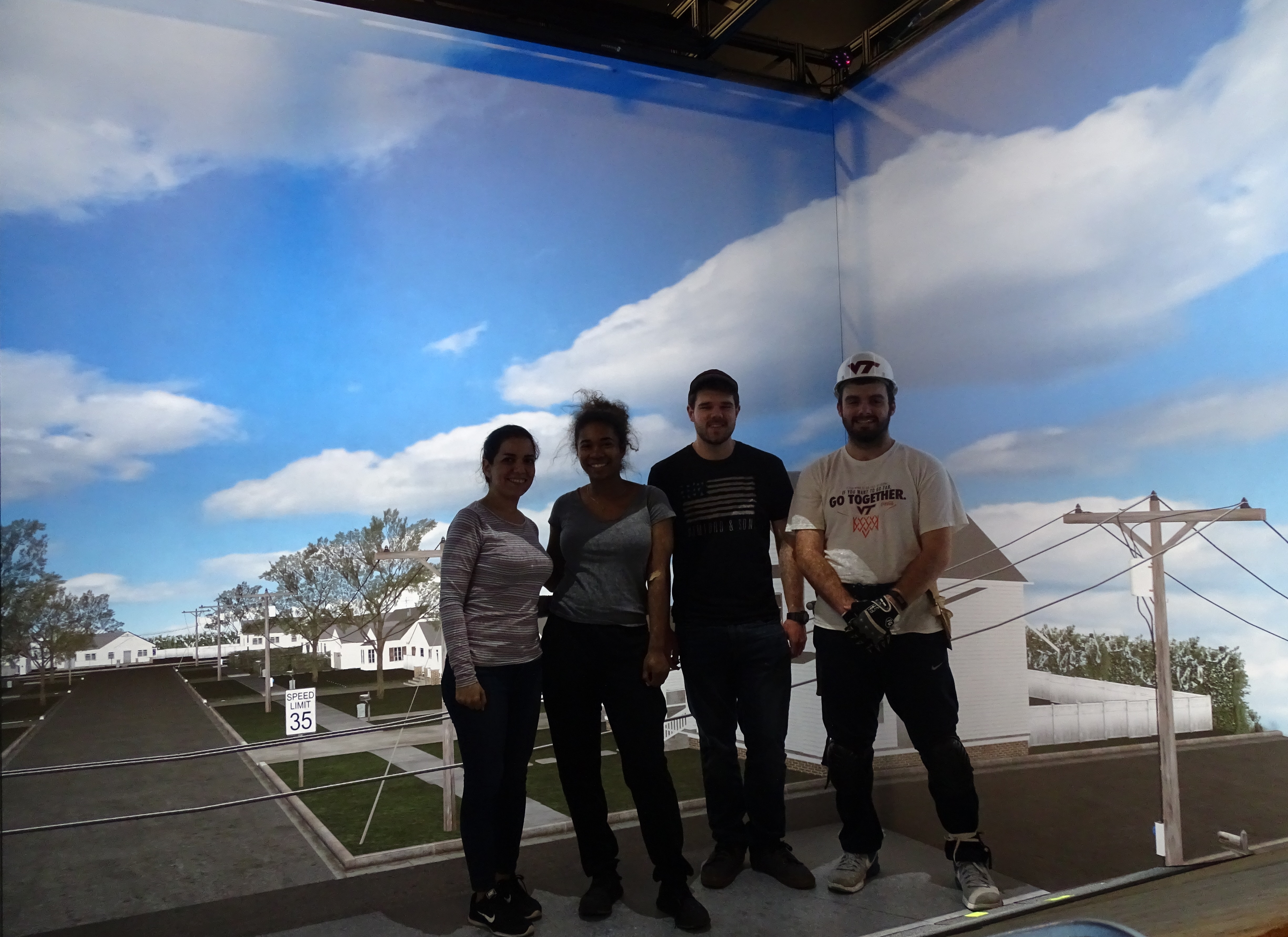Sogand Hasanzadeh: Constructing the science of safety

The following story was written in April 2019 by Lauren Holt in ENGL 4824: Science Writing as part of a collaboration between the English department and the Center for Communicating Science.
The construction industry is one of the most hazardous industries worldwide, and human error is the main cause for up to 80 percent of all incidents. Sogand Hasanzadeh, a Ph.D. candidate in the Department of Civil and Environmental Engineering at Virginia Tech, has dedicated her research to addressing this issue with the hope of making the industry safer.
As I walked up to the first floor of Patton Hall to meet Hasanzadeh at her office, I was excited to learn more about a subject I was admittedly naive about. Hasanzadeh greeted me with a warm smile, and we began our discussion before even taking our seats.
While in Iran, her home country, Hasanzadeh worked as a construction manager for several different firms and gained firsthand experience in the industry. Despite Hasanzadeh’s authoritative presence and strong personality, she struggled as a woman in a male-dominated industry, she says.
“When I walked onto the construction site the workers didn't want to listen to me," she remembers."They didn't want to listen to a woman. They laughed at me and teased me.”
Despite this adversity, Hasanzadeh was dedicated to her career and decided to continue her education in construction engineering and management at the University of Nebraska-Lincoln, and now in civil engineering here at Virginia Tech.

While on the job in Iran, Hasanzadeh observed that there was a fundamental problem on construction sites: safety. One might think that providing more training and protection devices would be enough to prevent injuries and reduce the accident rate for construction workers; however, current statistics prove otherwise.
“The important questions are: why has the industry not experienced greater safety returns?" explains Hasanzadeh. "Why, after providing all these safety interventions, do we still have the highest fatality rates?” Her current research aims to answer these questions.
There are a few parts to solving this problem, but Hasanzadeh is particularly interested in the finding that humans take more risk when they’ve been provided more protection, a phenomenon researchers call “risk compensation.” This happens because everyone has a specific and individual safety tolerance.
Hasanzadeh hypothesized that by providing more training and protection equipment, “unintentionally, we encourage the workers to take more risk on the construction site,” leading to more injuries despite the safety interventions. Additionally, she wanted to see how a worker’s individual personality, safety knowledge, and risk tolerance affect their risk compensatory behavior.
Hasanzadeh’s next step was to design an experiment to study this phenomenon. She decided to focus on roofing construction workers with falling hazards. This study needed to simulate different experimental conditions, one of them including no fall protection. However, it is unethical to put subjects in a dangerous situation for an experimental study, so Hasanzadeh and her team had to get creative. She decided to use “The Cave,” an automatic virtual environment located in Torgersen Hall, to create an immersive “mixed-reality” environment.

In “The Cave,” the participant only needs to wear 3D glasses to see the surrounding virtual environment as well as their real body parts, creating the perceptions that are necessary to simulate that naturalistic behavior of roofers on a job site. In conjunction with a piece of real roof, “The Cave” simulated a traditional suburban environment, with added sound effects and wind blowing in order to introduce possible distractions.
“We wanted to give the workers the feeling that everything is real,” Hasanzadeh said.
The results of her study did in fact show that workers who feel more protected as a function of having more protective equipment may increase their exposure to fall risks. This false sense of security, lower perceived level of risk, and lower level of stress gave the participants the courage to take more risks.
“Now it is our responsibility to spread awareness about this phenomenon, and we plan to integrate this into our next phase of the research,” she explains.
Something that Hasanzadeh highlighted as a large part of this research was its interdisciplinary aspects, including collaborations with Dr. Scott Geller in the Department of Psychology, Dr. Nicholas Polys in the Department of Computer Science, and Dr. Joseph Gabbard in the Department of Industrial and Systems Engineering.
“The hardest part about interdisciplinary research is that people's mindsets can be very different,” she says. “But I really appreciated this experience because it has broadened my view about what is happening and what is ignored on a construction site.”
Hasanzadeh’s smile grew as she expressed gratitude for all of her mentors and colleagues, but especially for her advisor, Dr. Jesus M. de la Garza, whom she credited with being an excellent mentor and “very supportive during the extensive design and implementation processes” of her research.
Through all of the adversity Hasanzadeh has faced as a woman working in the construction industry and as an interdisciplinary researcher, she came to a firm conclusion that all of the struggles are worth it to be able to make a difference in the industry.


